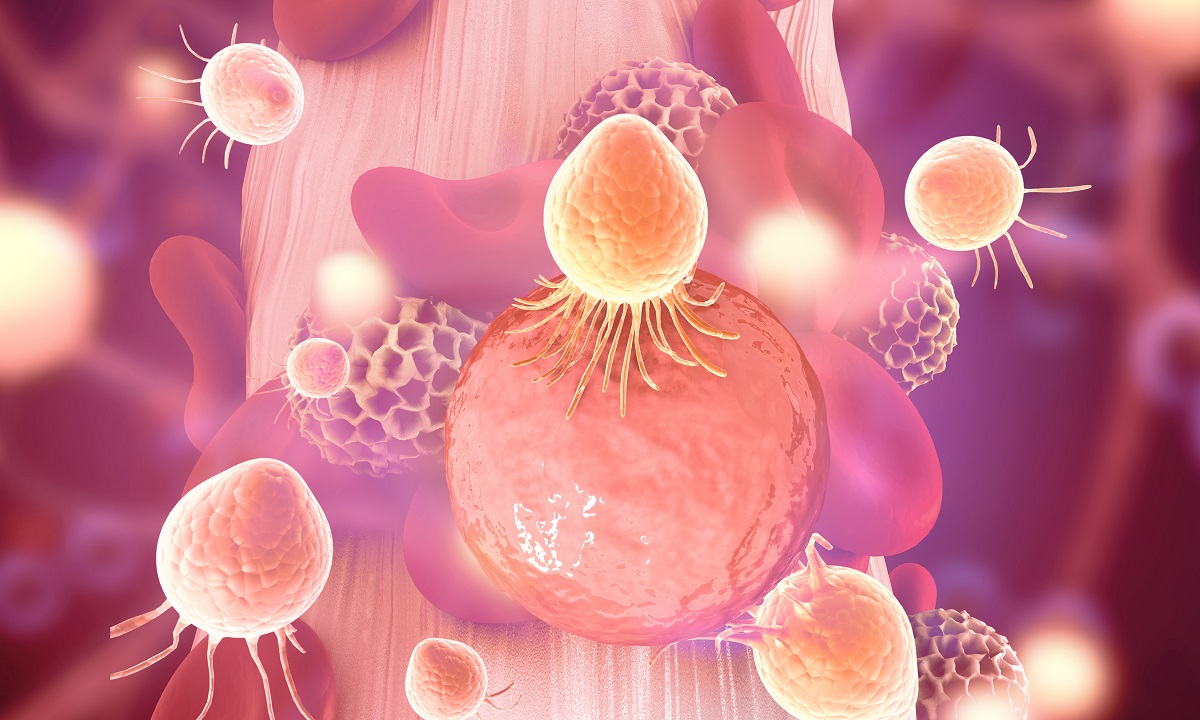KEY TAKEAWAYS
- The PROPHETIC trial aimed to develop and validate plasma proteomics-based models for predicting treatment-related toxicity in patients with NSCLC.
- Researchers identified distinct protein signatures linked to severe irAEs, irAE-rash, and chemo-AEs, highlighting unique toxicity mechanisms.
Immune checkpoint inhibitors (ICIs) have revolutionized the treatment of metastatic non-small cell lung cancer (NSCLC). However, these therapies, often combined with chemotherapy, can lead to significant toxicities, impacting patients’ quality of life (QoL) and treatment course.
Currently, no reliable biomarkers exist to predict the development of immune-related adverse events (irAEs), specific irAEs (skin rash), and chemotherapy-related adverse events (chemo-AEs) in patients with NSCLC.
Jarushka Naidoo and the team aimed to develop and validate plasma proteomics-based models for predicting treatment-related toxicity in patients with NSCLC using pretreatment plasma samples.
Researchers collected pretreatment plasma samples from 426 patients with NSCLC receiving PD-1/PD-L1 inhibitors (with or without chemotherapy) and 138 patients receiving chemotherapy alone. Using aptamer-based technology, they performed proteomic profiling, covering ~7000 proteins per sample. Toxicity data, graded using CTCAE v. 4.2, were attributed to immunotherapy or chemotherapy by the treating oncologist and verified by 2 independent oncologists specializing in irAEs.
The study focused on identifying Toxicity-Associated Proteins (TAPs) linked to severe irAEs (grade ≥3 or leading to ICI discontinuation within 100 days), ICI-induced skin rash (irAE-rash), and chemo-AEs. These TAP sets were integrated into 3 machine learning.
The models demonstrated significant predictive performance, as shown by area under the curve (AUC) of receiver operating characteristic (ROC) plots (severe irAE model: AUC=0.62, P-value=0.004; irAE-rash model: AUC=0.75, P-value<0.0001; chemo-AE model: AUC=0.67, P-value=0.002) also high correlations between predicted AE probability and observed AE rate (severe irAE model: R2=0.88, P-value=0.0016; irAE-rash model: R2=0.91; P-value=0.018; chemo-AE model: R2=0.80, P-value=0.01).
The severe irAE, irAE-rash, and chemo-AE models were built on 231, 108, and 114 proteins, respectively. Only 2 proteins were common to all 3 TAP sets, indicating these models reflect different biological mechanisms for each toxicity type.
The severe irAE TAP set showed significant enrichment of inflammation, with an abundance of neutrophil- and monocyte-related proteins. TAPs elevated in patients who experienced ICI-related skin rash were significantly enriched with proteins linked to gdT-cells, basophils, and inflammation. The chemo-TAP set demonstrated significant enrichment of angiogenesis pathways.
The study presented 3 novel computational models for predicting severe irAEs, specific irAE type (skin rash), and chemo-AEs using pretreatment plasma proteomic profiles. The findings provided valuable biological insights into treatment-related toxicity in NSCLC.
Overall, the study demonstrated a promising framework for developing predictive models tailored to different classes of treatment-related toxicity, potentially enabling personalized treatment strategies and improving outcomes for patients with NSCLC.
The trial was sponsored by OncoHost Ltd.
Source: https://cattendee.abstractsonline.com/meeting/20598/presentation/804
Clinical Trial: https://clinicaltrials.gov/study/NCT04056247
Naidoo J, Gandara DR, Sullivan RR, et al. (2024). “Plasma proteomics-based models for predicting immunotherapy- and chemotherapy-related toxicity in NSCLC patients.” Presented at: World Conference on Lung Cancer (WCLC); September 10, 2024; Singapore.



